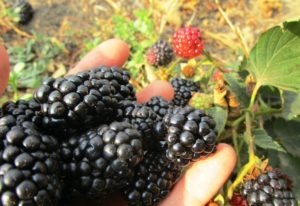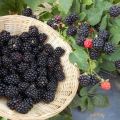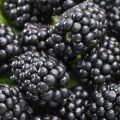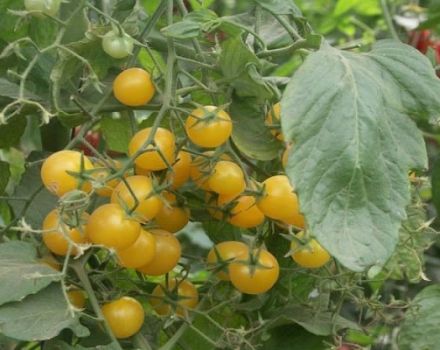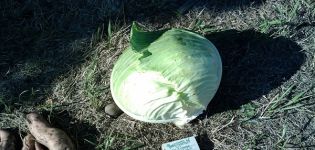Types, symptoms, treatment and control of pests and diseases of blackberries
Blackberries have begun to gain the attention of gardeners recently. Therefore, not everyone is still familiar with the rules of plant agricultural technology. But if the basic methods of caring for a berry crop are clear and simple, then opinions differ about pests and diseases of blackberries. And how to deal with them and what are the preventive measures, not every experienced summer resident knows.
Content
- 1 Classification of blackberry diseases
- 2 Symptoms and types of fungal diseases
- 3 Methods of treating fungal diseases
- 4 Classification of viral diseases and their manifestations
- 5 Prevention and treatment
- 6 Bacterial diseases, measures to combat them
- 7 Other diseases
- 8 Varieties of pests and signs of their parasitism
- 9 Blackberry root pests
- 10 On the shoots of the bush
- 11 How to deal with insect infestations
Classification of blackberry diseases
All garden plant diseases can be divided into those that are caused by:
- improper care and adverse conditions;
- pathogenic fungi that move with the help of wind, rain, man;
- bacteria that live in the soil;
- viruses spread by insects.
The connection between garden pests and blackberry pathologies is strong. By damaging parts of the plant, insects contribute to the penetration of pathogenic microorganisms, weakening the garden culture.
Symptoms and types of fungal diseases
Even a novice gardener can determine an infection caused by fungal spores. Leaves and stems are covered with spots, areas of mold of different colors are formed on them. They are the site of dispute development. The penetration of the fungus takes place by getting into the stomata, lentils of the berry plant. Even a small damage on the bush will become a gateway for parasites to get inside plant tissues.
Rust
Symptoms of pathology include the presence of small orange dots on the stems and leaves. Growing in volume, they turn the plate into a solid dried field. The leaves begin to fall off, and the bushes stop developing and weaken. The spots on the stems contribute to the cracking of the shoots.
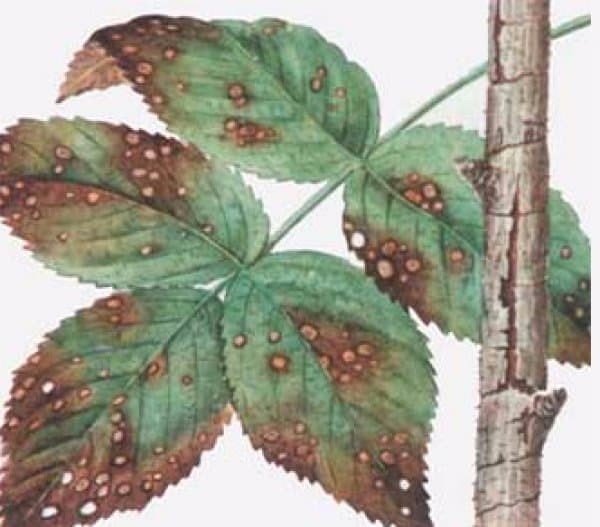
Treatment consists of treatment with Bordeaux liquid or copper sulfate solution. Infected branches and leaves are pruned by burying them into the ground to a depth of 15 centimeters, where they decompose.
Septoria, or white spot
Sick seedlings cause blackberry ailment. The fungus is especially active in wet and cool summers. Already at the beginning of the season, last year's shoots will be with leaves covered with white spots. The same light areas are visible around the kidneys and internodes. By the end of summer, the spores multiply, the fruiting body of the fungus is black dots on parts of the plant.
Timely removal of affected leaves, pruning of diseased shoots will stop the course of the disease. Before the leaves bloom, the bushes must be sprayed with Bordeaux liquid in the form of a 1% solution.
Anthracnose
The pathogenic fungus spends wintering in plant waste... In spring, it infects leaves, shoots, buds, inflorescences. The description of signs of infection includes the fact that the leaves are covered with lilac spots with uneven edges up to 2-4 millimeters in size. Due to the fact that the leaves and shoots do not develop, affected by the disease, dry out, then the berries cannot be expected.
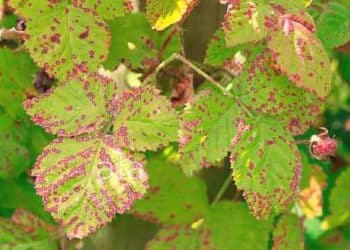
Gray rot
The disease affects all aerial parts of the plant, but berries are most affected. Spores, germinating, have a negative effect on the growth of berry culture. Light brown mold on berries is one of the clearest signs of the disease. At the same time, the fruits do not ripen, they fall off, and most of the harvest is lost. The drug Horus is considered effective against the fungus. You can also use copper-based products.
Phylosticosis
The pathology is called brown spotting, since it is characterized by spots of various shapes and sizes of brownish color. Then they are decorated with black dots in the middle. With an advanced stage of pathology, the entire surface of the leaf turns brown and then dries up. If symptoms are found, it is necessary to destroy the affected leaves, and treat the blackberry bushes with fungicides.
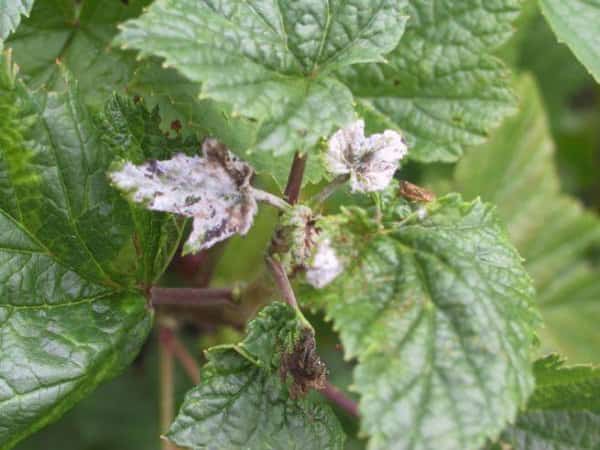
Purple spot
In warm, humid winters, the fungus remains viable, settling on blackberry bushes in spring. The shoots and stems of the plant covered with reddish spots begin to crack. The leaves dry out and fall off. You cannot expect a good harvest from the plant, there will be few ovaries, and they will dry out ahead of time.
Methods of treating fungal diseases
The fight against fungal infections is based on preparations containing copper. Bordeaux liquid and copper sulfate are especially popular. Nowadays, biological products are offered that effectively affect the cause of the pathology. Trichodermina solution is necessary for the treatment and prevention of diseases. It acts actively against the fungus in early spring before the leaves bloom.
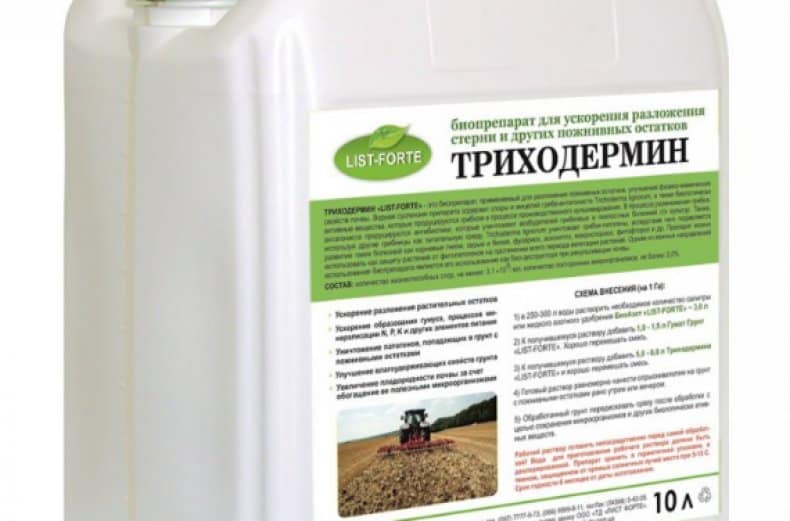
It is necessary to treat the bushes before flowering and after with fungicidal agents. This will help stop damage to the flowers and ovaries of the berry. If symptoms of fungal infection appear, then you can apply the treatment with "Fundazol".
Before wintering, you need to take preventive measures. For this, the bushes are sprayed with copper-containing agents.
Classification of viral diseases and their manifestations
Blackberry pathologies caused by a virus are less common than fungal infections. But they do significant damage to the plantation of berries.
Ring spot
In spring, a chlorotic ring pattern can be found on blackberry leaves. In this case, the top of the stem dies, and shoots appear from the axillary buds. The bush becomes unkempt, with ugly shoots. The virus is carried by aphids. Its peculiarity is that it is also found on garden raspberries.
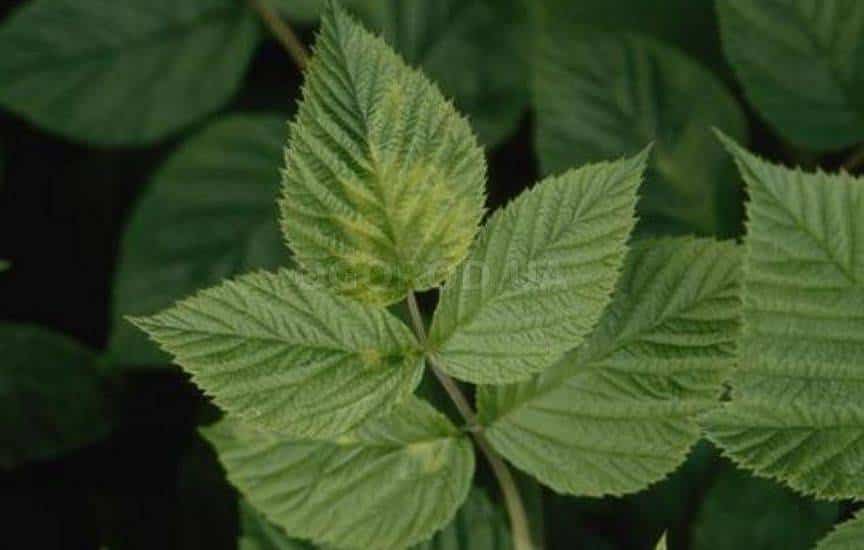
Mosaic
The disease is manifested by a mosaic pattern of yellowish spots on the leaves. The spots are fan-shaped along the veins of the leaf plate. During the growing season, the bushes turn yellow, weaken, do not give full-fledged berries.
Curliness
The cause of the disease is the seedlings infected with the virus. They learn about the presence of pathology by twisted leaves. Instead of green, the surface of the leaf plate becomes yellow-brown.Internodes and inflorescences look ugly on bushes. And the fruits will not be tied on diseased plants.
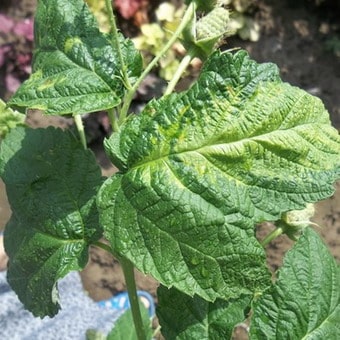
Yellow mesh
The disease has a sign of chlorosis, when the entire surface of the leaves is covered with specks, like a fan. The danger of the disease is that the plant stops development, begins to dry out.
Prevention and treatment
It is impossible to get rid of the virus from a diseased blackberry bush, therefore preventive measures play an important role. Among them it is necessary to highlight:
- the fight against aphids, nematodes, as vectors of viruses;
- careful selection of a seedling, its treatment with disinfectants;
- the procedure of spraying with a special preparation that has a destructive effect on pathogenic organisms - "Pentafag".

Competent agricultural techniques when growing berry crops will protect plants from serious pathologies.
Bacterial diseases, measures to combat them
The peculiarity of bacterial infection is that pathogenic microorganisms penetrate into damaged, weakened plants. The disease begins to manifest itself as growths on the roots, which disintegrate as it develops. So the bacteria remain in the ground, persisting until the next year and infecting all blackberry bushes.Weeds serve as carriers of bacterial cancer. Therefore, it is imperative to destroy them, loosen the aisles regularly. And diseased crops are uprooted and burned.
Root and stem cancer
The manifestations of bacterial cancer include:
- growths, cones are formed on the roots and shoots of blackberries;
- bushes stop growing, dry up;
- young growth is weak, thin;
- leaves wither.
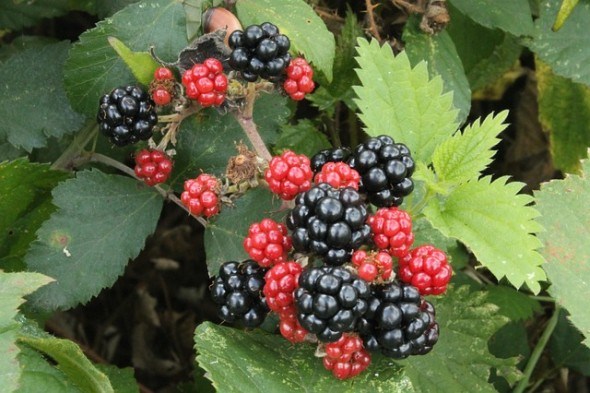
Since bacteria need wounds and cracks to penetrate into plants, they must be covered with pitch in time, treated with disinfectants in order to exclude infection. When small bumps appear on the stems and roots, they are cut off, the cuts are treated with clay or garden pitch.
Plants need to be sprayed with Pentafag C. Only in this way can a valuable culture be saved from destruction.
Other diseases
There are such pathologies in blackberries, the cause of which is difficult to explain. Although they are not very common, you need to be aware of them.
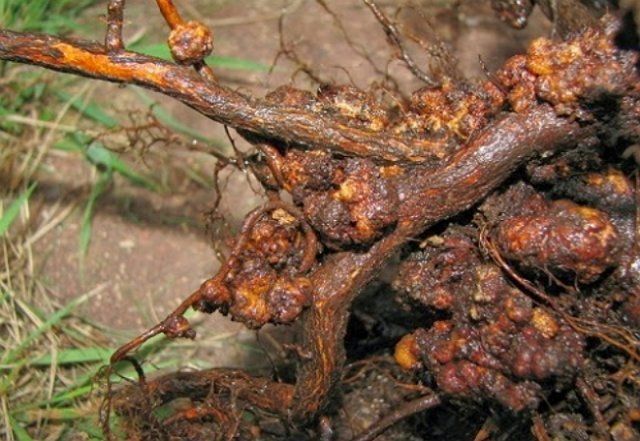
Overgrowth, or dwarfism
Similar to broomsticks sticking out of the ground - this is how berry bushes look like unicellular mycoplasmas. The disease occurs when plants are weakened after winter, some of their shoots are frozen. It is difficult for a berry to recover even after a long drought. When such "short ones" decorate the garden plot, it is clear that a sick blackberry will not be resurrected. It must be dug up and burned. It is better to spray the remaining bushes with "Fundazol".
Varieties of pests and signs of their parasitism
Of the harmful insects for blackberries, both those that winter in the ground and those that live on stems and leaves are dangerous. Some parasites need the sap of the leaves to live, which they suck up. Others feed on stems and shoots.

Blackberry root pests
For the inhabitants of the upper layers of the soil in the garden, food must be obtained by making moves. When insect larvae reach the roots of plants such as blackberries, they begin to parasitize on them. Therefore, to save the culture, a timely fight against insects and their larvae is needed.
Medvedka
A large insect with strong legs gnaws at the roots of a blackberry. After that, the bush begins to dry out. It is necessary to determine the cause of the disease. To do this, shovel the soil from the roots to identify the pest. The burrows of the parasite are filled with water with ammonia or soapy water. For baits, manure with straw is used, filling the holes with it. Bears will build nests in them, and then you can scatter organic material and destroy the insect.
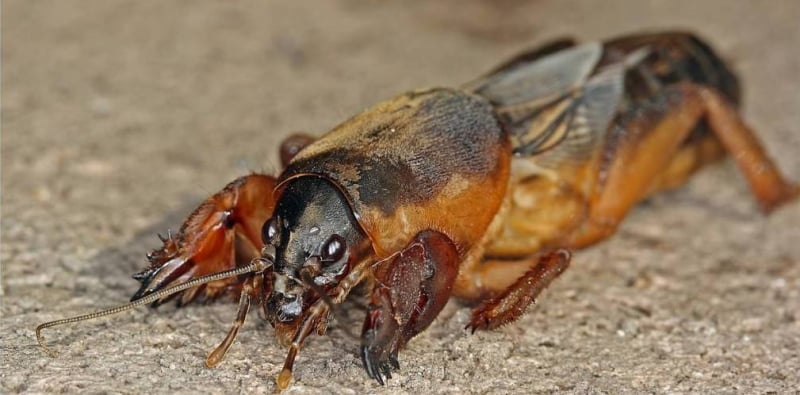
Chafer
May beetle larvae, or beetle, feed on leaves and roots of blackberries. You can destroy the larvae by digging up a bush and placing the root in a chatterbox of clay and tobacco dust.In May, the bushes are watered with water with a few drops of iodine.
Leaf parasites
When the leaves of a blackberry are deformed, it is necessary to carefully examine them for the detection of pests. Seeing colonies of insects, you can manually collect them or tear off the affected leaves.
Raspberry leaf sawfly
Pests are leaf-eating pests, since their larvae destroy leaves first in the lower part of the bush, then rise up. The larvae spend the winter in cocoons, hiding in the fallen leaves.
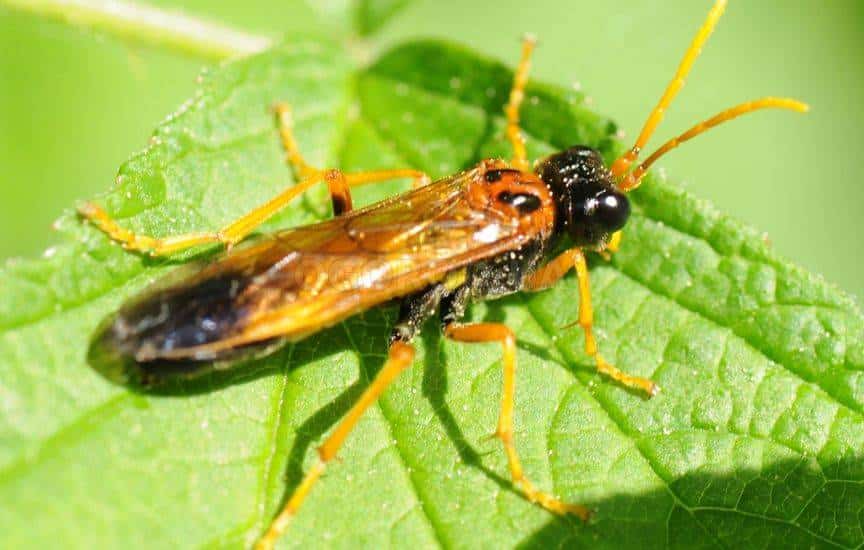
If you do not fight the sawfly, then the bushes will soon be left without greenery.... To protect the berry plantings from pest attacks, it is necessary to dig up the ground around the plants. He does not like when they are sprinkled with infusion of garlic, tobacco.
Blackberry aphid
This type of aphid is large in size. It has dark patterns on its yellowish back. Aphid colonies parasitize on the back of the leaf. The fight against them is carried out both by spraying with insecticides and by folk remedies.
Raspberry leaf aphid
From spring, when the leaves of the blackberry become ugly and become covered with sticky secretions, they begin to suck out the juices of the plant of the aphid family. In summer, a huge number of small pests can be seen on the shoots. From them, the plant becomes infected with fungal infections, viral diseases. Of the drugs used to combat aphids, "Confidor" or "Fitoverm" are used.
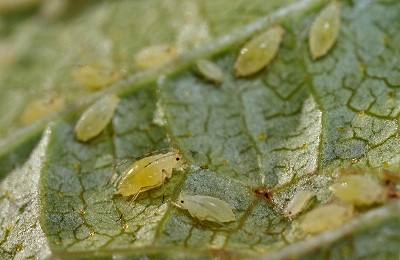
Common spider mite
A small spider with four pairs of legs is visible only through a magnifying glass. But the harm done to the berry culture is enormous. It settles on the underside of the leaves, sucking the juices and braiding everything with a thin cobweb. Because of this, the leaves begin to turn brown, die. After fertilization, females find refuge in fallen leaves, lumps of earth.
The action of the pest can be prevented by cleaning and burning garbage in the fall, digging up the soil, fumigating with sulfur.
Raspberry hairy mite
The cobweb entangling the shoots, leaves and berries of blackberries indicates that the plant is affected by a tick. White dots are found at the bottom of the plate. The leaves begin to deform, and the plant lags behind in development.
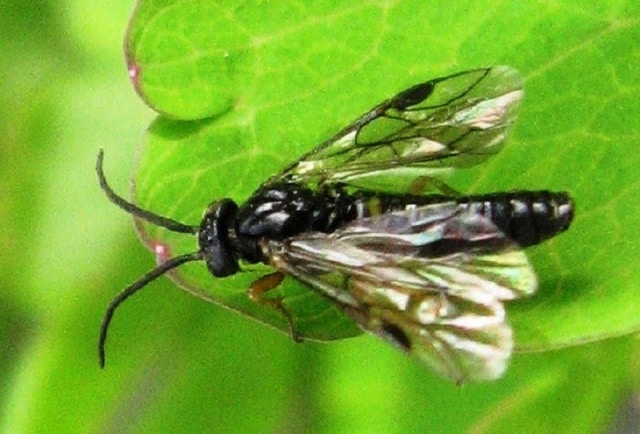
On the shoots of the bush
Shoot damage is difficult to find, since insects are as microscopic as the damage done by them. But from them, blackberry bushes can become infected with pathogenic viruses, fungi that penetrate into plant tissues.
Raspberry walnut
A small hymenoptera insect, with its pathogenic effect, causes the growth of elongated swellings on the shoots, gall. After that, the berry begins to dry out, stops in development. As soon as they find swelling on the branches, they try to cut them off and treat the affected areas with Aktellik.
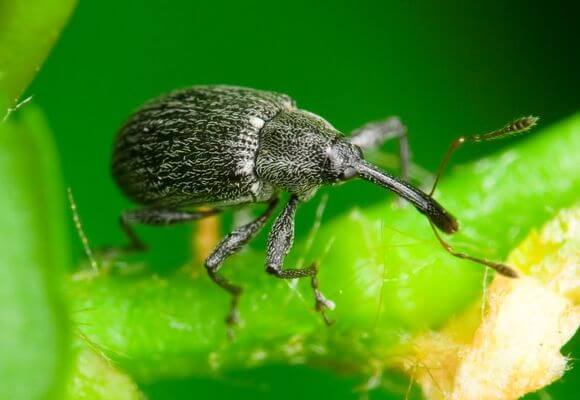
Raspberry shoot aphid
The buds at the tops of the shoots are affected by the shoot-type aphids. Having been fed with juices from the branches, the parasite hurries to destroy the inflorescences, petioles, then moving on to the fruits. Insect colonies increase several times over the season, threatening to destroy the entire blackberry bush. To eliminate the pest, it is necessary to cut out the shoots infected with the parasite, and spray the bush with a preparation such as "Fitoverm".
Raspberry stem fly
Flies with transparent wings circle over the blackberry bushes, laying eggs. The larvae that appear bite into the tissues, making passages inside the stems. From here occurs the wilting of the berry culture with sagging branches.To prevent the fly from flying out, in the early spring, mulch the soil around the bushes with a layer of compost or humus.
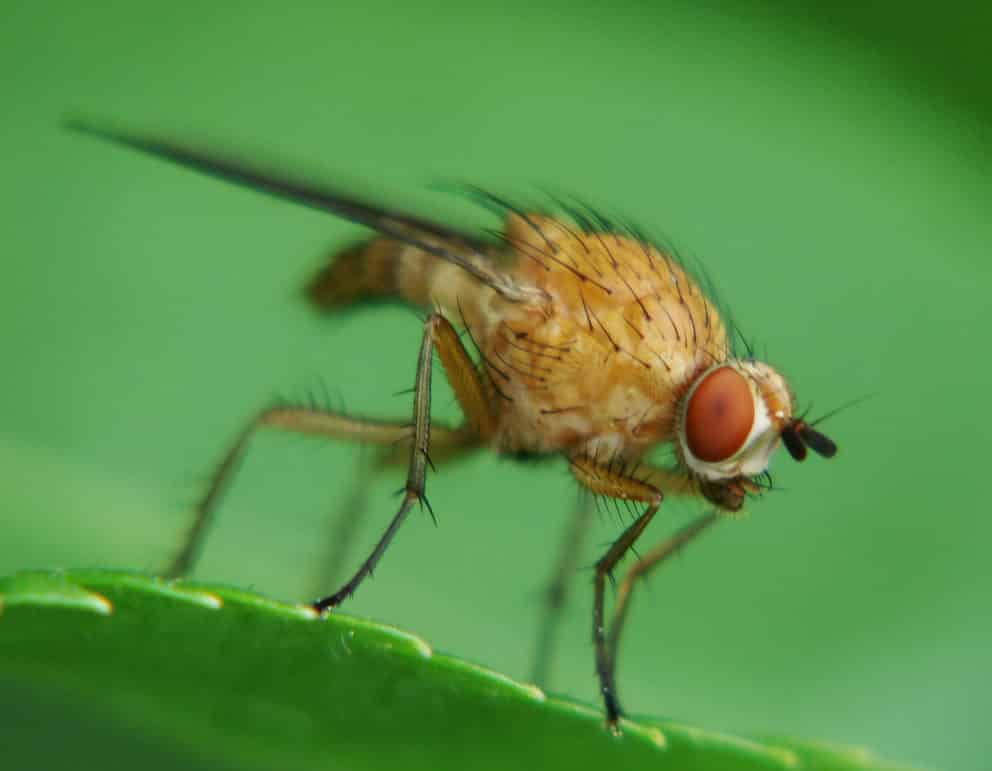
Raspberry shoot gall midge
Feeding on the juices of a blackberry plant, fly larvae hide in special growths, galls. After pupation, after some time, they transform into adult gall midges. The color of an adult is interesting: a long body with orange stripes rests on high legs.The danger is posed by the habitats of the larvae, since the shoots crack here, they begin to break.
Pest attacks can be prevented by carefully examining the bushes, cutting out weakened and diseased shoots.
On buds, flowers, buds and berries
In blackberries, tasty and healthy berries are appreciated, and when the fruits do not appear, then this is due either to diseases or pests. Among the harmful insects, there are many that themselves do not mind eating black drupes. Then it becomes clear why the berries are drying.
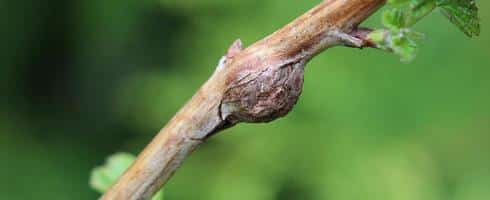
Raspberry kidney moth
A delicacy for the parasite is young buds, as well as buds of inflorescences, ovaries. The insect prevents black berries from developing. They do not reach ripeness, they immediately begin to deform, become tough. You can get rid of butterflies by shaking off adults from the bushes. After collecting the pests on a plastic bag, they are burned.
Flower beetle
This is the name of a bug with a body length of 3 millimeters, gray and black in color. After gnawing the peduncle, the female makes a clutch of eggs there. And having already hatched, the larvae are engaged in eating blackberry flowers. You can get rid of the pest by picking up insects by hand or by spraying with Vofatox, a solution of wood ash.
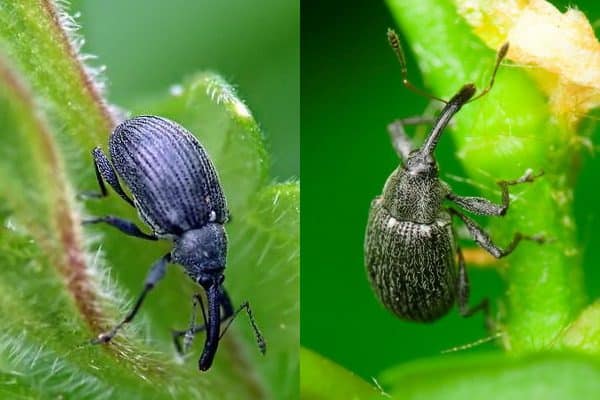
How to deal with insect infestations
Only timely processing of plants helps to save them from death. Regularly inspecting the blackberry bushes, they notice all the changes in the aboveground part. It is necessary to pay attention to the condition of leaves, flowers, shoots. When drying leaves are found, the cobwebs on them immediately take action. They start with sparing options, switching to insecticides if insect reproduction threatens the varietal berry.
Agrotechnical techniques such as digging the soil in spring and autumn, mulching, cutting out weak shoots will stop parasites and kill them.

